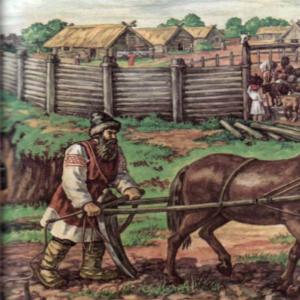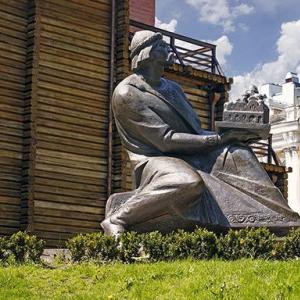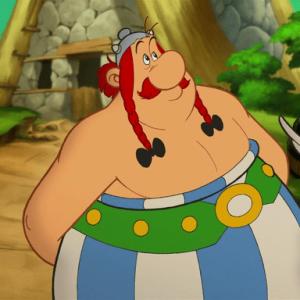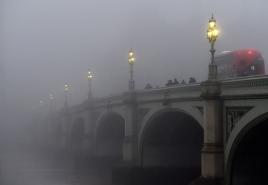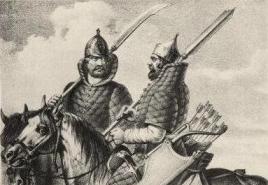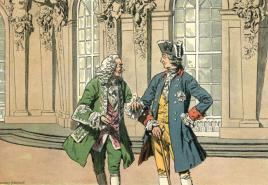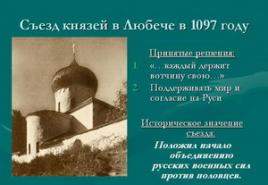Where did England come from? English history: from Roman colony to British Empire
The name of a country like England today is probably known to the vast majority of people on planet Earth. However, have you ever thought about why England came to be called England? Today we will look into this issue and some other issues related to this country.
The history of the origin of the name, which today bears one of the most advanced countries in the world, has no hidden facts, because the name was received in honor of a tribe that lived on the territory of modern Britain long before the advent of our era. According to historians, between the 5th and 6th centuries BC, a Germanic tribe settled in Britain, whose inhabitants called themselves Angles. It is quite simple to trace the similarity between the name of the English and the country with the name England.
Why is England called Great Britain
Another question that people ask quite often is why England also came to be called Great Britain. However, we immediately note that this name is not correct, since Great Britain is the United Kingdom, which also includes England. In addition to England, Great Britain also includes Wales, Northern Ireland, and Scotland.
Why England was called the "Workshop of the World"
The name “Workshop of the World” began to be applied to England back in the 18th century, when the country successfully implemented the industrial revolution. Then in England such industries as textile and engineering took a very serious step forward. In addition, widespread production of all kinds of equipment began to make human labor easier. This led to the fact that England then began to be called the main workshop of the world.

Why is England called "Fogy Albion"
Also, from ancient times, England was unofficially called Foggy Albion, and this fact also has a completely rational explanation, which is that the word “Albion” can be translated as “white”, because it comes from the Latin concept “albus”. In the south of Britain there are chalk cliffs in honor of which this name could have arisen.
As for “Foggy”, there is often a slight fog or haze around the coast of Great Britain.
Why is England called a "Constitutional Parliamentary Monarchy"
As for the last question, the answer to it can also be formulated very clearly, briefly and understandably: this characteristic concerns modern England due to several factors:
- There is a queen in the country, who, although she mainly performs only representative functions, has a place to be. This means it is a monarchy;
- The constitution in a country is the main act, a collection of laws, which means it is a constitutional monarchy;
- Parliament is the main legislative body of England, which influences the fact that the country is a constitutional parliamentary monarchy.
The national flag of Great Britain.

Great Britain (Great Britain, United Kingdom of Great Britain and Northern Ireland) - a state in Western Europe; consists of four historical regions: England (39 counties and 7 metropolitan counties), Wales (8 counties), Scotland (9 districts) and Northern Ireland (26 counties). A special regime has been established for the Isle of Man and the Channel Islands. Great Britain heads the Commonwealth of Nations (called the British Commonwealth of Nations until 1947), created in 1931. Great Britain is a constitutional monarchy. The head of state (and also the head of the Commonwealth) is Queen Elizabeth II. Legislative power in the country belongs to the monarch (purely formally) and parliament, consisting of the House of Commons and the House of Lords; actual power is concentrated in the hands of the government, headed by the prime minister. Two parties are actually fighting for power - Conservatives and Labor.
/data/pict/652.jpg)
London. Buckingham Palace is the main residence of British monarchs; was built according to the design of the architect John Nash. First half of the 19th century. The first monarch to live in the palace was Queen Victoria.
The population of Great Britain is 60.7 million people, predominantly English (80%), as well as Scots, Welsh (indigenous residents of Wales), and Irish. The stability and prosperity of the country attract numerous immigrants from different parts of the world. In most large cities there are neighborhoods inhabited by Indians and Pakistanis, Chinese, and immigrants from Arab countries. Most of the population is concentrated in the most industrialized southern and central regions of England, where the largest cities are located - London (the agglomeration called Greater London), Portsmouth, Southampton, Birmingham, Liverpool, Manchester, Leeds, Sheffield. The UK is one of the highly urbanized countries. Most English people belong to the Anglican Established Church (one of the largest branches of Protestant Christianity), and there are also many Catholics and Methodists in Wales.
/data/pict/651.jpg)
Queen of Great Britain Elizabeth II Windsor.
Geography
Great Britain is located in the north-west of Europe, on the British Isles (the island of Great Britain is the largest, the north-eastern part of the island of Ireland, the Isle of Man, the Channel Islands, numerous small ones: the Hebrides, Shetland, Orkney, etc.). Great Britain is washed by the Atlantic Ocean, the North and Irish seas, the English Channel (locally called the English Channel), Pas-de-Calais, North and St. George. The coastline is heavily dissected by numerous bays (fjords in the north and river estuaries in the south), forming the large peninsulas of Wales and Cornwall.
Parts of the country differ significantly in topography and climate. In the north and west, mountainous terrain predominates - the North Scottish Highlands (the highest peak in Great Britain is Ben Nevis, its height is 1343 m), the South Scottish Highlands, the Pennines and the Cambrian Mountains. These mountain systems have plateau-like peaks and gentle, vegetated slopes. The eastern and southern parts of the country are occupied by hilly plains framed by rocky ridges (cuestas). The mountains are dominated by peat bogs, heathland and meadows used for pasture. Forests consisting of oak, beech and birch occupy about 8% of the country's territory.
There are a large number of rivers in Great Britain, many of which are navigable and connected by canals. Among the largest rivers are the Thames, Severn, and Trent. The north of the country is replete with lakes, the largest being Lough Neagh in Northern Ireland, Loch Ness and Loch Lomond in Scotland. Near the north-western spurs of the Pennines lies the vast Lake District. Great Britain, especially Scotland, is called the land of fog and rain.
The island position and the warm Atlantic Gulf Stream determine the climate of Great Britain: soft and humid, oceanic. Negative temperatures are rare even in winter. The wettest cities are Liverpool and Manchester; it rains here 220–230 days a year. There are also a lot of rainy days in London - 180 a year, but this does not mean that it rains from morning to evening. In spring and summer, the weather is changeable, and rain clouds quickly give way to sparkling sunshine.
In the mountains, especially in the north - in Scotland - frosts are common in winter, and snow on many slopes lies from November to April-May. On the peaks and slopes of mountains facing the sea, in many places along the coast, the cold is aggravated by constant winds. Scotland would lose some of its flavor without the cloudy low skies and biting winds.
/data/pict/657.jpg)
Scotland. Loch Ness.
Loch Ness in Scotland is famous primarily as the abode of Nessie - a semi-mythical monster (either a descendant of dinosaurs, or even a fabulous beast), which, according to legend, lives in the depths of the lake, sometimes appearing on the surface.
Great Britain. Lake District. Lake Windermere.
Lovers of lakes and water recreation should visit the Lake District (Lancashire and Cumbria), where England's largest national park is located. The steep coastal cliffs of the Hebrides Islands, cut by fjords, are attractive, the most beautiful of them is the island of Iona. The Orkney Islands are well worth a visit, including the bird sanctuary on the "bird island" of Bass Rock.
Fans of mountain tourism, alpine skiing and rock climbing will be attracted by the mountains of Scotland: the Ilond Hills (a favorite place for walks of Walter Scott), the Cairngorms, the Pennines, especially the Peak District at their southern tip on the border of England and Wales.
The mountains and coasts of Wales are extremely beautiful - especially in the northern part, where the highest mountain in England and Wales - Snowdon (1085 m) is located; the surrounding Snowdonia National Park is overflowing with numerous mountain streams, waterfalls, and wooded valleys. In southwest Wales there are sulfur, salt and other mineral springs.
Fans of paleontology will undoubtedly be interested in seeing the Devonian limestone deposits, where ancient fossil organisms have been found. Thanks to the discoveries made in its depths, an entire geological era began to be named after this county!
Story
The British Isles have been inhabited since antiquity. Tin has been mined here since prehistoric times; the Phoenicians and Greeks called them the Tin Islands. Archaeological excavations have revealed sites of ancient man of the Paleolithic era (40,000–10,000 BC) in Wales and Derbyshire, Neolithic monuments (3400–1600 BC) in barrows on the chalk hills of Southern and Eastern England, in South Wales, Gloucestershire, Norfolk and in many other places there are remains of settlements, defensive structures of the Bronze and Iron Ages (up to 450 BC) throughout the country. The most amazing and famous monument is Stonehenge.
/data/pict04/bes/pr00901.jpg)
Salisbury. Cromlech. Stonehenge.
The builders of Stonehenge did not leave their name to their descendants. We know the name of their successors - the Celts. The Celts came here in the second half of the 1st millennium BC. e. We know about them mainly from the descriptions of Julius Caesar, who conquered Britain. The Romans established themselves here very precariously, and there were frequent uprisings. However, it was the Romans who founded many cities, including the capital - London, then Londinium. The Romans failed to conquer all the islands (and they did not need the relatively cold northern lands). To keep out the barbarians from the north, they built a series of fortifications, the most famous of which survives is Hadrian's Wall, separating England from Scotland (built by Emperor Hadrian in 122–130). The city gates in Lincoln, the gates in Colchester, the baths in Bath, and numerous ruins of Roman military fortifications have survived to this day.
/data/pict/659.jpg)
Great Britain. Andrianov Val.
The Romans brought Christianity to the Celts and merged with the local population. After the collapse of the Roman Empire, the Celts arose their own kingdoms. One of the kings, Arthur from the Pendragon dynasty, became famous not so much as a real historical figure, but as a hero of later legends. Until now, researchers are looking for historical truth in the legends of the Arthurian cycle. There are memorials associated with Arthur in Cornwall, and his supposed grave (looted in the Middle Ages) is at Glastonbury. The Celts succumbed in the 6th century. to the conquerors the Angles and Saxons - the peoples of the Germanic group. The Anglo-Saxons (in the north of the country they were also joined by the Jutes) were soon baptized. And not from the Celts, but from Augustine sent from Rome. Augustine became the first Archbishop of Canterbury and under him the construction of the main cathedral began. And to this day the Archbishop of Canterbury is the primate of the Anglican Church.
The Aglo-Saxons founded several kingdoms, sometimes uniting with each other, sometimes at war. Their boundaries generally coincide with the boundaries of the historical counties. Aglo-Saxon is the basis of modern English. Among the Saxon legends is the legend of King Lear, later used by Shakespeare. The epic Beowulf has also been preserved from the Saxons. In Scotland, Ireland, Wales and partly in Cornwall, Celtic populations remained.
For a long time, the Angos-Saxons paid tribute to the Vikings - “Danish money”. King Alfred the Great (c. 849-900) unified the country and stopped paying tribute. However, after his death, King Canute I the Mighty united England with the countries of Scandinavia. Close ties with the Vikings continued later. After the death of the childless King Edward the Confessor (1066), three claimants claimed the right to the throne: from the Anglo-Saxons - Harold, from the Vikings from Norway - also Harold (who, by the way, was married to one of the daughters of Yaroslav the Wise), from Normandy - William. William's troops, having crossed the English Channel, fought with the Anglo-Saxons and England began to be ruled by the Plantagenet dynasty. These kings spoke French and many French words found their way into the English language. Even the famous Richard the Lionheart did not speak English.
The English literary language was born at the end of the 14th century with the publication of The Canterbury Tales by J. Chaucer. At this time, the country was experiencing the Hundred Years' War, in which England was largely successful, but ultimately lost, losing its continental possessions. The Plantegenet dynasty was replaced by the Tudors as a result of the Wars of the Roses. In the same war, almost the entire old nobility was killed; the new gentry nobles became the support of the new dynasty. During the reign of Henry VIII (1491-1547), two great things began that had a huge impact on the history of the country: the enclosures that drove the peasants off the land and the Reformation, the formation of the Anglican Church. Henry's daughter Elizabeth I (1533-1603) made England a great power with her wise and cautious policies. She paid special attention to the development of the fleet and sent her people to found colonies.
Her reign is the golden age of English culture, whose decoration was the work of Shakespeare. Elizabeth was childless and left the throne to her relative James Stuart, the son of Mary Stuart, Queen of Scots. Elizabeth executed Mary, accusing her of attempting to assassinate herself, and thereby created a precedent for regicide in Europe. The reign of the Stuarts united England and Scotland. James (James) I's son, King Charles I, was executed during the Revolution in 1649. England was a republic for almost two decades. Here religious strife broke out between different branches of Protestantism. Despite their slight difference in faith, the Puritans and Independents destroyed each other, and many others along the way. With the restoration of the monarchy (Charles II, on the throne since 1660), religious disputes were stopped and many customs that the Puritans had prohibited were restored. Hence the British love for the holiday of Christmas, which was banned during the revolution.
The Stuart dynasty was not particularly popular and was replaced by another, the Hanoverian. Already in the 18th century, the Industrial Revolution began in England. The first steam engine, J. Watt, was created here, and the world's first spinning machines and weaving machines appeared. Although the discovery of porcelain was made in England even later than in Russia, England became the birthplace of the original "stone masses", varieties of ceramics, the center of production of which was and remains the historical county of Staffordshire. In the 18th century Britain lost its colonies in North America, which split off to form the United States (but Canada remained), but began to populate Australia and conquer India. During the reign of Queen Victoria (1819-1901), the country became Great Britain, creating an empire on which the sun never set. The Victorian age became a period of prosperity for English culture. And the names of cultural figures are not so striking with their greatness or deep psychologism, but with their inimitable ability to captivate the reader with a plot, create surprisingly believable images of heroes, scare, make them laugh and warm them with descriptions of home comfort.
The Victorians are Charles Dickens, William Thackeray, Arthur Conan Doyle. Under Queen Victoria, the basic rule of British state life finally took shape: the queen reigns, but does not rule. There is no constitution in the country, but its role is played by a whole set of laws, starting with the famous “Habeas Corpus” and the “Bill of Rights”. The leading role belongs to the parliament; the party that wins the parliamentary elections forms its own government headed by the prime minister. During the reign of Queen Victoria, Whigs (liberals) and Tories (conservatives) fought for power. At the beginning of the 20th century, a new political force emerged in the country - the Labor (Workers) Party. Influenced by the impressions of the October Revolution of 1917, changes were made to legislation in order to improve the situation of workers and employees. If the London “bottom” of the 19th century. was considered a gathering place for criminals and beggars, then from the beginning of the 20th century. it is gradually being put in order.
Two world wars contributed to the collapse of the colonial system. After experiencing a period of stagnation (especially in the 1950s), the UK became a founding member of the European Coal and Steel Union, from which the European Union has now grown.
Architecture and landmarks
English architectural styles are distinctive. The Romanesque style of the Anglo-Saxons, which dominated architecture until the mid-11th century, was distinguished by the simplicity of architectural and construction techniques: simple semicircular arches, gable roofs, borrowed from the usual wooden architecture. The Norman Romanesque style that replaced it lasted until the end of the 12th century. It was distinguished by an abundance of identical powerful columns, round decorated window openings and ceiling vaults, narrow windows, and not very powerful buttresses.
/data/pict/654.jpg)
Edinburgh. Lock.
Outstanding Norman castle buildings are Hedingham in Essex and Conisbrough in Yorkshire. Part of the buildings of Edinburgh Castle in Scotland is made in the same style. Early Gothic is characteristic of buildings of the 13th century, their general appearance is determined by the significant height and vastness, long windows reaching the base of the building (the facade of Lincoln Cathedral, fragments of Ely and Peterborough Cathedrals).
Or. Gothic cathedral. 14th century
In the 14th century, early English Gothic, otherwise called decorative, was replaced by early Gothic - in such architecture a characteristic emphasis was placed on individual elements of ornament: huge lancet windows with complex openwork stone carvings, heavy buttresses, pillars with tightly connected ribs, sculptures entwined with leaves, cornices, floral ornaments. This style is best represented by the cathedrals of York, Norwich and Lincoln, and individual elements of Westminster Abbey.
/data/pict04/bes/l_522.jpg)
London. Westminster Abbey. Gothic church 1245-1745, chapel of Henry VII - 1503-1519. The site of the coronation of English kings since William the Conqueror. Since the 13th century, Westminster Abbey has housed the tomb of English kings (the last of them was George II, 1760; since then, burials have been made in Windsor Castle), statesmen, and famous people. Legends attribute the founding of the abbey to the Saxon king Sibert (7th century), the first Christian Saxon.
The richest ornamentation reached perfection in the building art of the late Gothic, or "perpendicular" style (late 14th century - 15th century), characterized by a special predilection for vertical planes (King's College in Cambridge, St. George's Chapel in Windsor Castle and Henry VII's Chapel in Westminster Abbey ). In the 16th and early 18th centuries, Renaissance and Baroque styles dominated Britain, and their elements were often mixed in the same building. The most important monument of the style called “English Baroque” is St. Paul's Cathedral in London, built in the last third of the 17th century according to the design of Sir Christopher Wren, one of the largest English architects. The external appearance of this building contains spatial scope, unity, and fluidity of complex curvilinear forms.
In the 19th century, the monumental Georgian style was replaced by Victorian. One of the world's most famous buildings, Buckingham Palace, was built in this style. Having withstood the trials of fate (on September 9, 1940, a German bomb fell on the palace, three days later it was attacked again), it appears before us in all its grandeur and beauty. Later styles - from proto-Byzantine (Westminster Cathedral in London) to Art Nouveau and Constructivism did not change the existing architectural appearance of most cities in Great Britain, although they sometimes added an irresistible charm to their urban development. New
National characteristics
The British adherence to traditions is manifested not only in politics, but literally at every step, in the most ordinary life: the British adhere to their system of weights and measures (in a pub - an English beer bar - you will always be served a pint of beer, not half a liter), Driving on the left (when crossing the street, look to the right, then to the left). Of course, many purely “nutritious traditions” remained only in wonderful novels and films based on them. Breakfast in the form of eggs and bacon is not so popular due to its inconsistency with the rules of “healthy eating”; puddings and meat pies survive only in a few “spots” with local cuisine. Many are even sounding the alarm about the onset of varied continental (French, Mediterranean) cuisine and inexpensive catering establishments with Indian, Chinese, Thai and other Asian cuisine.
Tea with milk has long been the national drink of the British, their indispensable everyday “five o’clock tea” - “five o’clock” - is not just a strictly established meal time, but, above all, a reason for communicating with relatives, friends, and colleagues. This famous English tradition has spread to Europe and the USA. Nowadays, tribute to tradition is not just decoration. If near Edinburgh Castle you see a guard in an operetta-like Scottish skirt, in the eyes of a modern European, then the carbine in his hands, you can rest assured, is not a toy at all. And the Scots Guardsman himself is not an actor hired to entertain tourists, but a young man serving in a guard company, necessarily from the ancient Gordon family, who has long been granted the privilege of guarding the castle of the kings of Scotland. Old-fashioned cabs and omnibuses on the streets of London are just as functional, and clerks rushing to the City of London in the morning carry all the folders with papers in their arms.
National cuisine
Real British cuisine is either high quality and expensive, or, if you are content with simple food, it is inexpensive and is included in the menu of any cafe you can find at every turn. The pubs will offer many of the best beers and high-quality inexpensive food, and most importantly the opportunity to socialize, relax and feel the breath of English traditions.
Wine bars are popular - something between a pub and a restaurant. In all major hotels, it is customary to serve “Afternoon tea” (five-o" clock tea), accompanied by a special ritual. If desired, a guest of London can take a real culinary “trip around the world”. The menu of 14,000 restaurants in the city most often includes Indian cuisine, Chinese restaurants are also famous, continental African and Middle Eastern cuisine is offered.Sandwich cafes and bars offer you an “English breakfast”, which usually consists of a huge sandwich, a light snack, tea or cappuccino coffee.Such cafes are open from early morning until noon .
Chippie (open from 11.00 to 23.00) serves hearty and mouth-watering dishes: fish and potatoes fried in boiling oil, grilled chicken, sausages and pies. The best chippie, according to Londoners, is the Upper Street Free Shop on the street of the same name. The brasserie has an excellent selection of drinks and a variety of light snacks. The most visited in London are Soho Brasserie on Old Compton Street, La Brasserie on Brampton Road, L'Oreil on Sloan Square. As for restaurants, the best roast beef in London can be enjoyed at Simpson-in-the-Strand, the best dishes of English cuisine - at the Ritz Hotel. Roast beef, English leg of lamb, English pork pies, English trifle (pastries) are famous. The British also love lobster (lobster salad, lobster butterflies). Alcohol is sold on Sundays only after 19.00.
The shops
It's hard not to get shopping fever in London. The latest designs from the world's best couturiers can be found in the shops at Knightsbridge and Brompton Cross, Bond Street and Sloane Street. Trendsetters are concentrated around Beauchamp Place, and decent clothes can be bought at reasonable prices in the shops on Oxford Street. Avant-garde and exotic clothing is sold on King's Road, as well as at Kensington Market on High Kensington Street. During seasonal sales (Sales) in late January - early February and late June - early July, prices drop quite significantly.
In Covent Garden, which is full of shops selling outlandish goods, you will certainly find something exotic, for which it is sometimes difficult to find a name. There you will also meet street actors, fakirs, and sword swallowers. One of the oldest covered markets in London is located in the same square. Shops are usually open from 9-10 am to 5-6 pm, some are open until late.
All goods sold in UK stores are subject to Value Added Tax of 17.5%, which is usually included in the price of the goods. If the purchase price exceeds £100, then when crossing the border within three months of purchase, you can claim a VAT refund of 11% of the price of the goods (for tourists from non-EU countries). In the store, when purchasing, you must ask for a certificate.
CurrencyThe country's currency is the pound sterling (GBP). The UK is part of the European Union, but not the euro area. One pound is equal to 100 pence. In addition to the Bank of England, five other banks issue pounds sterling in the UK: the Bank of Scotland, three Northern Irish banks and a bank on the island of Jersey. Each of them issues its own banknotes. A tourist may be given a non-convertible Scottish pound instead of an English pound. The Northern Irish pound can only be exchanged in the British Isles. Travelers are less likely to encounter the Jersey pound, but there are scammers who specialize in slipping such local pounds to foreigners.
Holidays
The country's national holiday is the birthday of the reigning Queen Elizabeth II. In fact, she was born on April 21st. On this day she is congratulated in the press. The official celebration is moved to the second Saturday of June. Christmas is celebrated on December 25, New Year on December 31 - January 1. At this time, the country is on Christmas holidays, which applies to most enterprises and institutions. December 26 (Boxing Day) is also a day off. Easter is a moving spring holiday. The day off is Good Friday on the eve of Easter. In Wales, the day off is St. David's Day (patron saint of the Welsh) - March 1st. In Scotland, November 30 is celebrated as St. Andrew's Day, the country's patron saint (shared with Russia). March 17 is the Day of St. Patrick, the Enlightenment of Ireland. In England, St. George's Day is celebrated (April 23). May 1 is an official holiday; since the 20th century it has been celebrated as Labor Day, but in fact it is one of the oldest pan-European holidays of the arrival of spring. October 31 is Halloween - the eve of All Saints' Day. On this day, children dress up as witches and various small evil spirits and ask for sweets and inexpensive gifts. November 5th is Guy Fawkes Day. This is not a hero, but a participant in the so-called Gunpowder Plot in 1605, when Catholics tried to blow up Parliament, where the king was supposed to speak. Since then, the effigy of Guy Fawkes has been ceremonially burned late in the evening.
Let's figure out how England works - the birthplace of Jack the Ripper, Winston Churchill and Francis Drake. We must understand when to write “Great Britain”, when “England”, and when “British Isles” or, say, “United Kingdom”.
Geography first. As you can see from the map at the beginning of this post, the British Isles are made up of two large islands (the islands of Great Britain and the islands of Ireland), as well as several groups of smaller entities. It should be noted that the Channel Islands located in the English Channel, although they belong to the British, are still located off the coast of France. Therefore, they are sometimes included and sometimes not included in the British Isles.
Now a little history with etymology. In the north-west of France is the historical region of Brittany, which owes its name to the people of the Britons. Driven out of their native Britain, the Britons settled Brittany in the late Roman period. After this, two “Britains” were spontaneously formed on the map - the small one (Brittany in France) and the big one (the island of Great Britain).

In French these areas are called "Bretagne" and "Grande Bretagne" - that is, "land of the Britons" and "great land of the Britons".
The Channel Islands owe their name to another region of France - Normandy. Normandy, in turn, began to be called that after the invasion of the Vikings, whom the locals oppressed by the Vikings called “Nortmanni” or “Normanni” - northern people. If you want to read a beautifully written history of these places, I recommend a good book by science fiction writer Isaac Asimov, A History of England.
The origin of the names of the Orkney and Hebrides islands is lost in the darkness of time. The Shetland Islands are part of Scotland and obviously owe their name to it. The name of the Isle of Man comes from a figure in Celtic mythology called "Manannán mac Lir" by the Irish and "Manawydan" by the Welsh.
We smoothly move on to the political structure of the region.

As you can see on the multi-colored map, a smaller part of the islands is occupied by the Republic of Ireland, and the largest part is occupied by the state of Great Britain. Great Britain, in turn, consists of several parts.
The red part is England, the historical core of the kingdom. Blue - Scotland, a region inhabited by proud highlanders, which the British conquered for a long time and persistently and, in the end, took it into their tenacious hands. From a political point of view, the Hebrides, Orkney and Shetland Islands are part of Scotland.
The principality of Wales is indicated in yellow, which previously had the name Wallis in Russian, and whose inhabitants are still called Welsh in Russian.
Finally, Northern Ireland is indicated in green - a sore spot for the British. Separatist sentiments are still very strong in Northern Ireland. If suddenly your name is Ira and you are flying to England, do not write your name on your suitcase in English letters. English police react to the acronym IRA - “Irish Republican Army” - very nervously.
Great Britain also includes the so-called “crown lands” - the Channel Islands and the Isle of Man.
The full name of the state of Great Britain is “United Kingdom of Great Britain and Northern Ireland”, sometimes it is shortened to “United Kingdom”. In colloquial speech, it is also acceptable to call this state England or Britain - although bores will make comments to you every time you use these words to name the state.
When translating, you should remember that in English the terminology is slightly different from Russian. The term “Great Britain” means the island of Great Britain (England + Scotland + Wales), and the term “British Islands” means the state of Great Britain along with the Channel Islands and the Isle of Man.
It remains to mention two important facts.
Firstly, currently under the sovereignty of Great Britain there are 14 small territories evenly distributed in important parts of the planet from a military point of view - these are Gibraltar, Bermuda, St. Helena and so on.
Secondly, the Queen of England is still the official monarch in 16 states of the so-called “Commonwealth”. The Commonwealth Kingdoms include, in particular, Australia, New Zealand, Canada and, of course, Great Britain itself.
Perhaps this is where the short excursion into the internal structure of the British Isles can end.
If you are now imbued with the romance of all these old castles, landgraves, free forest robbers and other feudal remnants, I once again recommend the wonderful historical game “Kings Crusaders” from Paradoxes.
Etymology
England got its name in honor of the Angles, a Germanic tribe who, along with the Saxons and Jutes, migrated to the island of Great Britain in the 5th and 6th centuries AD. e. Some historians [ which?] the tribe is believed to have been descendants of those who lived on the Angeln Peninsula, part of the Jutland Peninsula, today part of northern Germany.
The first mention of the English is in a work called “Germany”, written in 98 AD. e. ancient Roman historian Tacitus.
Geography
Story
William I the Conqueror
Some historians [ which?] begin the count of rulers with the Norman Conquest in 1066, the numbering of English monarchs also uses this event as the zero point (for example, Edward I, crowned in the 13th century, was not the first king with that name - but he was the first Edward since 1066). But William the Conqueror did not found or unify the country, but only captured existing England, imposing Franco-Norman rule.
There is a movement in support of the creation of an independent parliament and government for England. The dissatisfaction of supporters of the movement is caused by the fact that while decisions that apply to Scotland alone are made by Scotland’s own parliament (and similarly with Wales and Northern Ireland), decisions that apply to England alone are made by the national parliament, where Scottish, Welsh voters vote and Northern Irish MPs.
The idea of an independent parliament is supported by many figures in the Conservative Party, while the Labor Party believes that the creation of independent authorities in the largest part of the kingdom will lead to a sharp reduction in the role of Scotland, Wales and Northern Ireland and is fraught with the collapse of the state.
Administrative structure
Historically, the largest administrative entity in England was counties. These entities arose from older ones that existed before the unification of England: kingdoms (like Sussex and Essex), duchies (like Yorkshire, Cornwall and Lancashire) or simply land grants awarded to nobles - such as Berkshire. Until 1867 they were divided into smaller units called hundreds. There was virtually no self-government within the county after political unification, so county boundaries were not clearly defined and had virtually no role. After the industrial revolution, as a result of the emergence of large industrial centers, metropolitan counties were formed, the centers of which became the largest cities.
England currently consists of 9 regions and 48 ceremonial counties.
Economy
Agriculture, manufacturing, the high-tech industry and the sports industry play an important role in the English economy. In 2010, sport contributed 1.9% of England's GDP, ranking among the 15 largest industries in the English economy, ahead of industries such as communications services, legal services, accounting, publishing, advertising and utilities. In 2010, sport accounted for more than 400,000 jobs, representing around 2.3% of all employment in England. According to experts, the health benefits of people who regularly engage in sports brought the English economy £11.2 billion. Holding mass sports competitions, such as marathons, increases the recognition of their venues and allows them to increase tourism income with minimal investment in infrastructure. The construction of new stadiums, such as the Millennium Stadium in Cardiff and the Etihad Stadium in Manchester, has boosted prices in local property markets.
Culture
National Costume
Although the Kingdom of England is a country with rich national traditions, it does not, strictly speaking, have a clearly defined national costume.
It so happened that in colloquial speech the names “England” and “Great Britain” are interchangeable words. In order to determine the correct relationship between these names, to understand “what is included in what is included,” it is worth turning to the history of the emergence of both toponyms.
The state in question is located on the islands. And it is separated from mainland Europe by the North Sea with the Pas de Calais and English Channel straits. The width of the latter at its narrowest point is only 32 kilometers, which in turn tempts athletes from different eras to complete marathon swims between France and the British Isles.
It is worth noting that what the swimmers succeeded in, Hitler’s troops failed to do during World War II. English Channel and remained an insurmountable obstacle for the German Wehrmacht.
 Let's consider the origin of the main toponyms of northern Albion. By the way, the very name of the British Isles “Albion” was already found among the ancient Greeks and has many interpretations. The 1st century AD scientist Ptolemy associated the Latin term "Albion" with the cold climate of Britain.
Let's consider the origin of the main toponyms of northern Albion. By the way, the very name of the British Isles “Albion” was already found among the ancient Greeks and has many interpretations. The 1st century AD scientist Ptolemy associated the Latin term "Albion" with the cold climate of Britain.
The very concept of “Britain” is the name of the oldest province of the island, originating in the name of the tribe of Britons, the war with whom Gaius Julius Caesar so colorfully described in his “Notes on the Gallic War”.
“England” - this name became known in the 9th century AD and is associated with the Germanic tribe of the Angles, who, together with the Saxons, captured the islands of the Britons in the 5th-6th centuries. Great Britain dates back to 1707 from the unification of the English and Scottish kingdoms under the auspices of a single monarchy.
Today the name of the state is: “United Kingdom of Great Britain and Northern Ireland.” England is an integral part of the Kingdom, along with Scotland, Wales and Northern Ireland, occupying two thirds of the country's total area.
 England's population is 84% of the total number of inhabitants of the kingdom. But, although England is often used instead of the name Great Britain, it is impossible to say, for example: “I’m going to England, to Cardiff!” - this is incorrect in meaning, since the mentioned Cardiff is the capital of Wales, and it would be correct to say: “I am going to the UK, to Cardiff!” or, as an option, “...to Cardiff, the city of Wales!”
England's population is 84% of the total number of inhabitants of the kingdom. But, although England is often used instead of the name Great Britain, it is impossible to say, for example: “I’m going to England, to Cardiff!” - this is incorrect in meaning, since the mentioned Cardiff is the capital of Wales, and it would be correct to say: “I am going to the UK, to Cardiff!” or, as an option, “...to Cardiff, the city of Wales!”
The rich history of the formation of Great Britain as a state is the most valuable part of world history, an era spanning several centuries. Its beginning is the heyday of the Roman Empire, its own heyday is the period of the European Renaissance. And since already in the 11th century there was a feudal state on the territory of England, then by the 19th century Britain became the largest producer and exporter of industrial goods.
Since the 16th century, for 400 years, this island state remained among the three most powerful powers not only in Europe, but also in the world. A traditionally strong navy, successes in industry, and the efforts of scientists and commanders allowed the British to spread their influence to all continents.
For a long time, the British had the largest colonial territories, and the expression about “... the sun never setting on the British Empire” was relevant until the mid-20th century. And even today, when the colonies are a thing of the past, more than 50 states from different parts of the world are under the dominion of Great Britain, maintaining, as a tradition, their subordination to the English throne. So England, as a part, and Great Britain as a whole, are place names rich in history and, as names of the same country, they sound very significant and meaningful.

